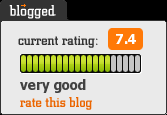According to Grassian and Kaplowitz in Information Literacy Instruction (2001), when planning an Information Literacy Instruction program, "The first step is to find out what your population needs to know" (2001, 133) It is the "heart of the active mode process" (2001, 132).
In many ways you are like an infantryman gathering reconaissance, or an intelligent manager taking the temperature of a system; the important thing is that students realize that needs assessment springs from a very proactive part of the librarian imagination.
Needs Assessments don't have to be terribly complex interactions, "watching reference desk interactions or the behavior of users in the library can give you a good idea of what is needed" (Grassian and Kaplowitz, 2001, 133). Therefore, there are formal and informal needs assessments. Formal assessments are things like "surveys, interviews, focus group meetings, document analysis, usability studies, and so on" (Grassian and Kaplowitz, 2001, 133). Informal assessments can be as simple as noting observations about patron/employee interactions at the reference desk, etc.
Knowing what patrons should know might be the more difficult information to ascertain, especially at a public library because educational levels at public library vary greatly. You can't ensure that every patron walking through the doors has the same educational threshold or attainment as the next patron; at a public library the range of education varies as much as it does on a subway car or in cue at the security line at LaGuardia, etc.
You will want to know what your patrons should know how to do and cross that with the skills you yourself would like to teach the patrons. If patrons don't need a particular that skill or it is too complex an idea to teach in four to six classes, then maybe the instructor shouldn't teach that skill, etc.
In addition, Grassian and Kaplowitz believe that, "Basic to the Needs Assessment process is developing a clear and complete understanding of the characteristics of your population" (2001, 133). You can also obtain demographic information from government agencies like the Census Bureau. Moreover, this represents the two first steps in the needs assessments planning process: "1.) Recognizing the user need 2.) Describe and Analyze the present situation for resources"(2001, 132).
The next thing you should do is establish instructional goals and objectives. What is the difference you ask between the two. "Goals describe the overall intent of the program in broad, general strokes. They describe what you would like to accomplish. They are general education priorities and are frequently stated as global abstractions" (Grassian and Kaplowitz, 2001, 136). An objective, on the other hand, "indicates what the student is expected to do, under what circumstances the behavior is to be exhibited, and how well the behavior myst be performed" (Grassian and Kaplowitz,2001, 137). In other words, "the objective describes the end product. Outcomes are how the students exhibit that they got there and include criteria for determining how well they succeeded" (Grassian and Kaplowitz, 2001, 137).
Reference:
Grassian, E & Kaplowitz, J. (2001). Information Literacy Instruction. Neal-Schuman Publishers,Inc: New York.
Spicaresque:
A Spanglish blog dedicated to the works, ruminations, and mongrel pyrotechnics of Yago S. Cura, an Argentine-American poet, translator, publisher & futbol cretin. Yago publishes Hinchas de Poesia, an online literary journal, & is the sole proprietor of Hinchas Press.
Subscribe to:
Post Comments (Atom)

.png)

No comments:
Post a Comment